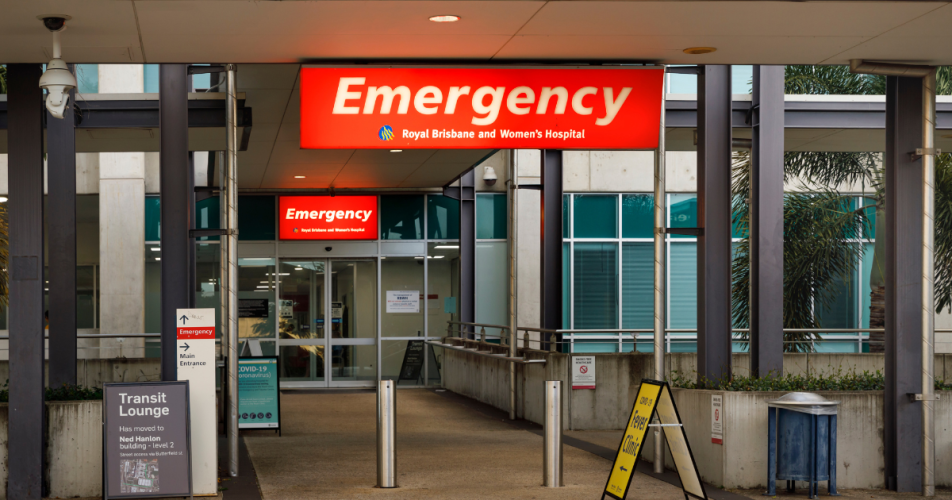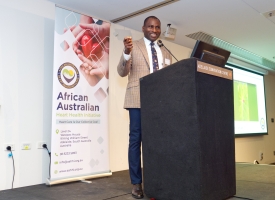New ED KPIs must not impact staff wellbeing
AMA Queensland President Dr Nick Yim talks to ABC Radio Brisbane Mornings presenter Steve Austin about the state government's new 24-hour emergency department rule.

Transcript: AMA Queensland President Dr Nick Yim, ABC Radio Brisbane, Mornings with Steve Austin, Friday 4 July 2025
Subject: New 24-hour emergency department rule
STEVE AUSTIN: A major funding rearrangement or overhaul could be on the cards for our hospitals. The Courier Mail today is reporting public hospitals that consistently have patients ramped for more than two and a half hours could lose funding, while hospitals can get extra funding for meeting KPIs around child health checks and reducing preventable admissions.
The official title looks like it's the Queensland Health Performance and Accountability Framework. Now, it works quite well overseas. Scandinavian countries have been doing this for a long time. In fact, they produce monthly reports on whether they're meeting their KPIs. But the paper reports any hospital wanting to move funds from one area to another must seek permission from the Director-General of Health. So, the question is, will it work? Dr Nick Yim is the President of the Australian Medical Association here in the state. I spoke to him earlier this morning and asked him whether it was a good idea.
DR NICK YIM: As you can imagine, with some of this news breaking in the press recently, there has been significant angst among some of our members. We acknowledge that the government has a challenging situation of increased wait times and access, our growing population and people needing to access our hospital services. We do need KPIs in place to improve clinical outcomes for our patients, because we all acknowledge that people waiting for over 24-hours in emergency departments is not ideal. Ultimately, we need to ensure that these initiatives are communicated appropriately to our clinicians on the floor so we can ensure that we are delivering good patient care.
STEVE AUSTIN: Hospitals are not about doctors, they're not about nurses, they're not about the budget. Hospitals have one purpose. They're about sick people, making sick people better and helping sick or injured people get better, aren't they? That's the reason they exist.
DR NICK YIM: Absolutely. Hospitals are there to deliver care for patients but underpinning all that is a healthcare system. We have nurses, doctors, allied health. So, as you can imagine, when people are waiting significant period of times, it is a sign that the healthcare system is under pressure. It's not just one department, it's across the whole board. That's inpatient teams, outpatient teams, and access to aged care beds, ambulance, et cetera.
STEVE AUSTIN: The paper reports any hospital wanting to move funds from one area to another needs to seek permission from the Director-General. Is that an issue for you and your profession?
DR NICK YIM: This is one of the challenging aspects where funding itself is [complex]. We are quite a large state, and our healthcare system is complex with both state and federal funds. So, that negotiation needs to take place between the Director-General and the hospital and health services. We need to ensure that there are efficiencies in place. If there's a large amount of funds [requested to be moved to another area], it's reasonable to assess why is that the case.
STEVE AUSTIN: We measure inputs, of course. Armies of public servants, both in hospitals and in the health bureaucracy, are measuring input data. So why not measure output data in the form of key performance indicators?
DR NICK YIM: That's a really good point. The key thing here with measuring output, is whether we are measuring the right outcomes and the right output. We acknowledge that our system is under pressure. So, if hypothetically the penalty for the incorrect output is decreased funding, that doesn't really make sense, because it just means that it's going to add additional pressures to the healthcare system. At the same time, we can't be blaming one department because it's a whole health system issue that leads to access block.
STEVE AUSTIN: Do doctors and nurses feel nervous about measuring key performance indicators, outputs as it were? Do they feel nervous about that?
DR NICK YIM: I think doctors, nurses, clinical staff, they do feel nervous, because at the end of the day, their number one goal is patient care. They want to deliver the best care to their patients that are in front of them and they don't want to be looking over their shoulders on a clock.
STEVE AUSTIN: Sure, but at least it gives them a benchmark. If you're not measuring outputs, there's no point measuring the inputs. You're not learning anything. You haven't got any sort of any trend on how you're going in any area.
DR NICK YIM: Absolutely. It's one of those situations where with these trends, it just demonstrates that there's pressure on the system. That pressure could be population growth, or it could be staff shortages – we've spoken previously about workforce. Is it an area that maybe needs more mental health beds, for example. We know that many patients who are in EDs are waiting for a mental health bed. So, these are the pressure points that we need to be aware of.
STEVE AUSTIN: Scandinavian countries apparently measure outputs and do monthly benchmark reports. If we did monthly reports here, would that be a help or would that be nerve-wracking for members of the AMA?
DR NICK YIM: Benchmarking reports, that already occurs in many hospitals with regards to surgical wait lists and outpatients. It comes down to how we utilise those benchmarking reports and how we action it. Ultimately, it comes down to that clear communication with the clinicians of how they're utilising that data. We all know as individuals, we don't like sticks. Sticks generally don't achieve the outcomes that we produce. We like to see incentives. That's a more positive way of approaching these changes.
STEVE AUSTIN: The previous government brought in legislation that legislates nurse-patient ratios. It's locked in by law. This would give some way of telling of how that's going and whether that's improving things in a hospital, in my mind. How do you see it, Dr Nick Yim?
DR NICK YIM: Nurse-patient ratios, that is potentially one measure, but it can't be a blanket rule across every location. Nurse ratios are significantly tighter in ICU. They're often a one-to-one ratio, as opposed to a ward, which is rehabilitation, where they don't need as much acute nursing care. I think there is quite a bit of nuance to that. It's a bit of a juggling act.
STEVE AUSTIN: Okay. So overall, how do you see the Queensland Health Performance and Accountability Framework? Do you give it a thumbs up or a thumbs down, or is it a wait and see?
DR NICK YIM: I think it's a wait and see, but this is something we're working quite closely with the department on. Our key messaging here is the fact that any of these performance frameworks need to be communicated clearly to the clinicians on the floor. That's nurses and doctors. Ultimately, it can't be putting pressure on them to make those decisions based on time. It should be based on the individual patient in front of them. That's the key thing and it needs to be looking from the whole system approach.
STEVE AUSTIN: Dr Nick Yim, thanks for your time.
DR NICK YIM: Thanks, Steve.



